January 26th is Australia Day and every year the nation celebrates in spectacular style. The flagship event is Australia Day Live held at Sydney Opera House and in 2019 it was bigger and better than ever. Australia’s musical stars, including Kate Cebrano, Jon Stevens and the Sydney Symphony Orchestra, took to the stage in an unforgettable concert, featuring dazzling firework displays and a breathtaking maritime extravaganza.
Australia Day Live in Sydney is produced by the NSW Government through the Australia Day Council of NSW and is proudly supported by Big Picture. Big Picture is a part of the NEP Worldwide Network, the leading production partner supporting premier content producers in live sports and entertainment across the globe.
This year’s Australia Day Live was a massive event for Big Picture, who supplied a turnkey technical solution of outside broadcast facilities, LED screens, event communications and network backbone which included a significant amount of Riedel equipment with 68 Riedel Artist Panels across OB trucks, production and event control locations, 25 Riedel MicroNs for uncompressed video and audio signal distribution and 22 managed switches interfaced across the event site at the Sydney Opera House and Circular Quay with over 10km of fiber.
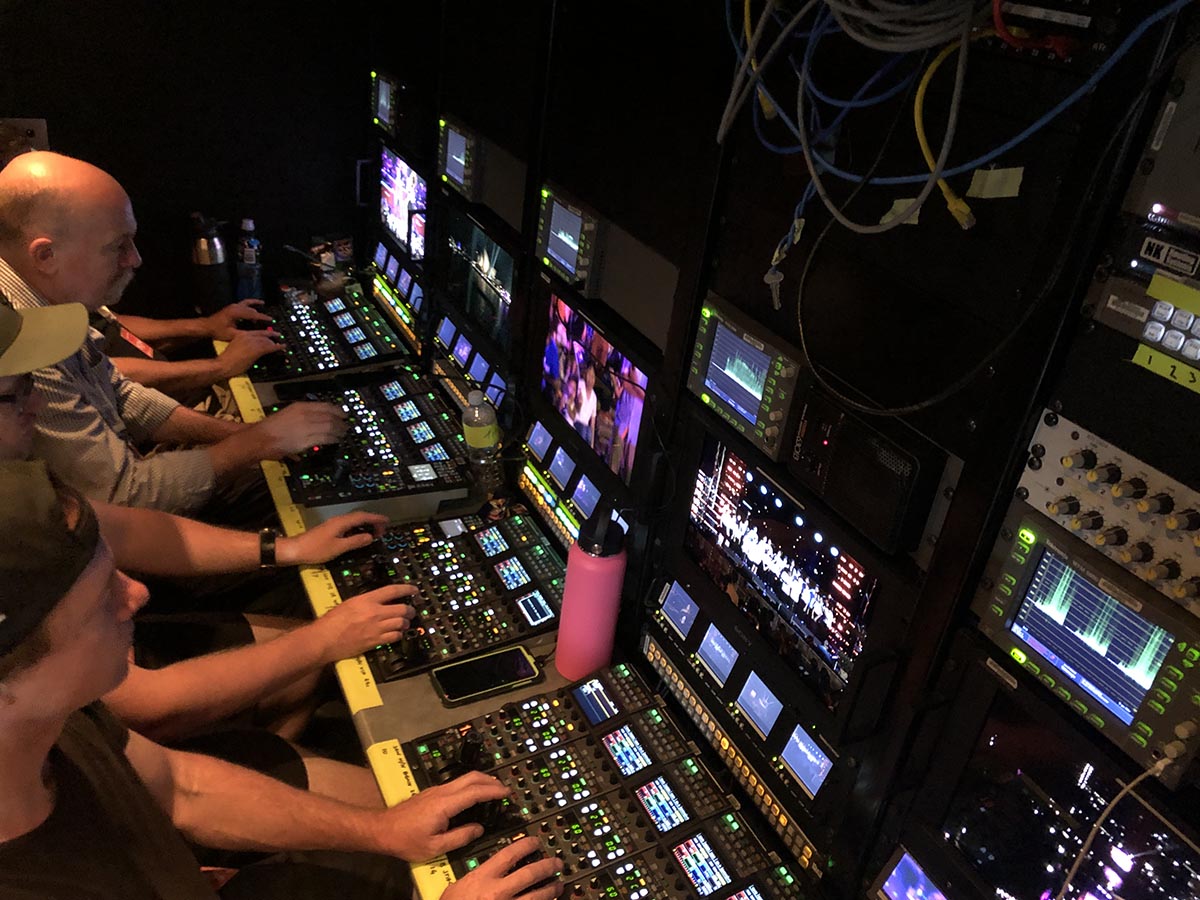
This was the first year that Big Picture supplied the entire broadcast facilities, LED screens, event communication and network backbone as the end to end solution. The full broadcast technical supply and management included two HD Broadcast Trucks – NEP Australia HD-10 and Big Picture HD-1.
“In previous years there were various suppliers to do different elements but this year we supplied the bulk of the technical solutions in those areas,” commented Josh Moffat, Special Projects & Business Development at Big Picture. “It’s a challenging job as everything is so spread out. Usually we do an OB or iMag setup for a concert where everything is in one area and everything directly connects to the OB truck or flyaway system in one central location.”
The geography of the event was expansive and running single cables to every camera, given that half of them are on the other side of Circular Quay with some on top of apartment buildings and one on Garden Island, was not practical. The Big Picture team worked hard to come up with a technical solution that would facilitate the set-up in an economical and streamlined manner whilst being reliable with built-in redundancy.
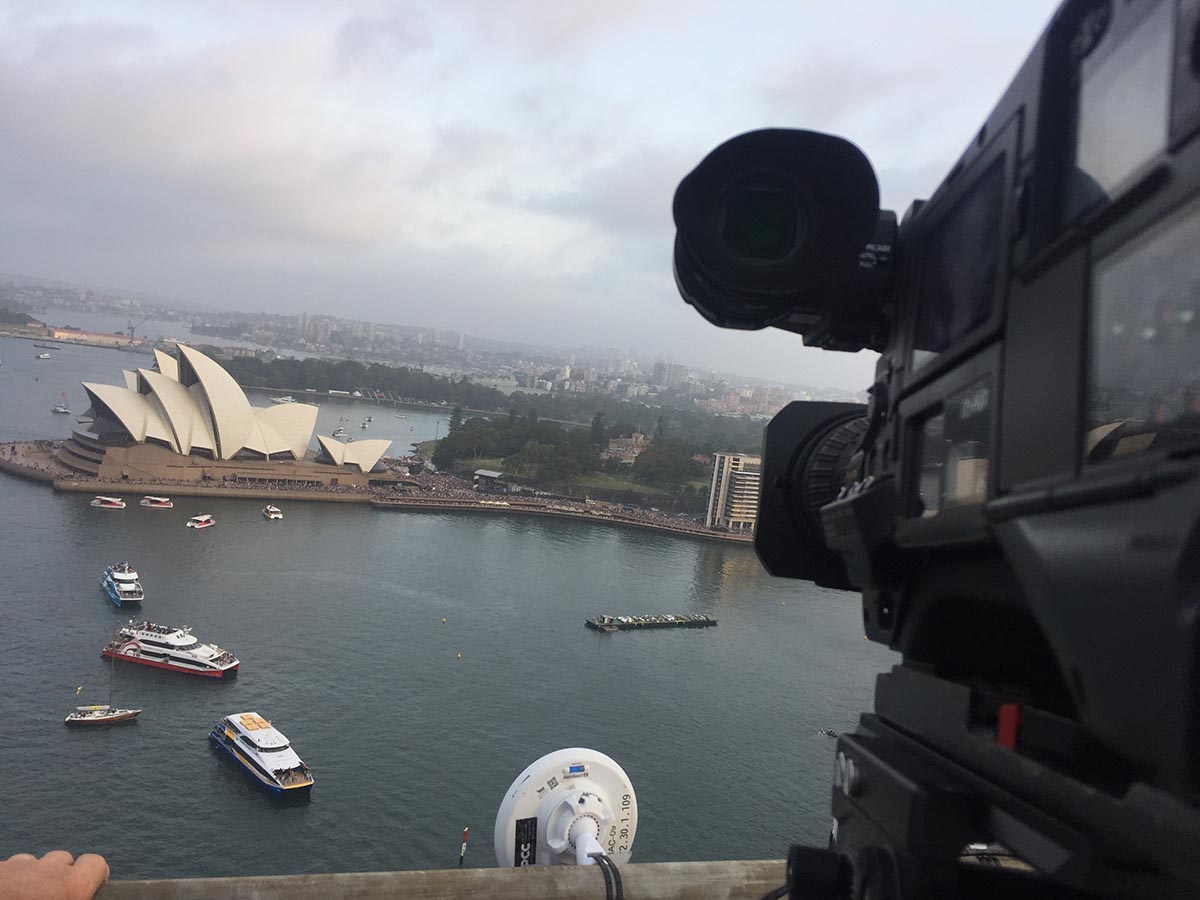
“Australia Day Live is a challenging project for many reasons,” commented Craig Borg of Five Peas, Production Manager Broadcast and Opera House Concert. “Mainly it’s the lack of bump in time we have on all sites, restrictions around site access and working hours, densely populated public / tourist areas, lack of rehearsal time and in some cases no opportunity to rehearse some maritime and aerial elements of the show.”
“It’s a lot of signals to move around a large distance,” added Josh. “The first thing we looked at was what we had to move, signal wise, between various locations. We already had a large inventory of Riedel MicroN fiber nodes so the natural solution, and the most elegant one, was to deploy them around the site for uncompressed video and audio transport between all stages and the screen barge located in the harbour. In all there was 820GB of network capacity on the Mediornet system.”
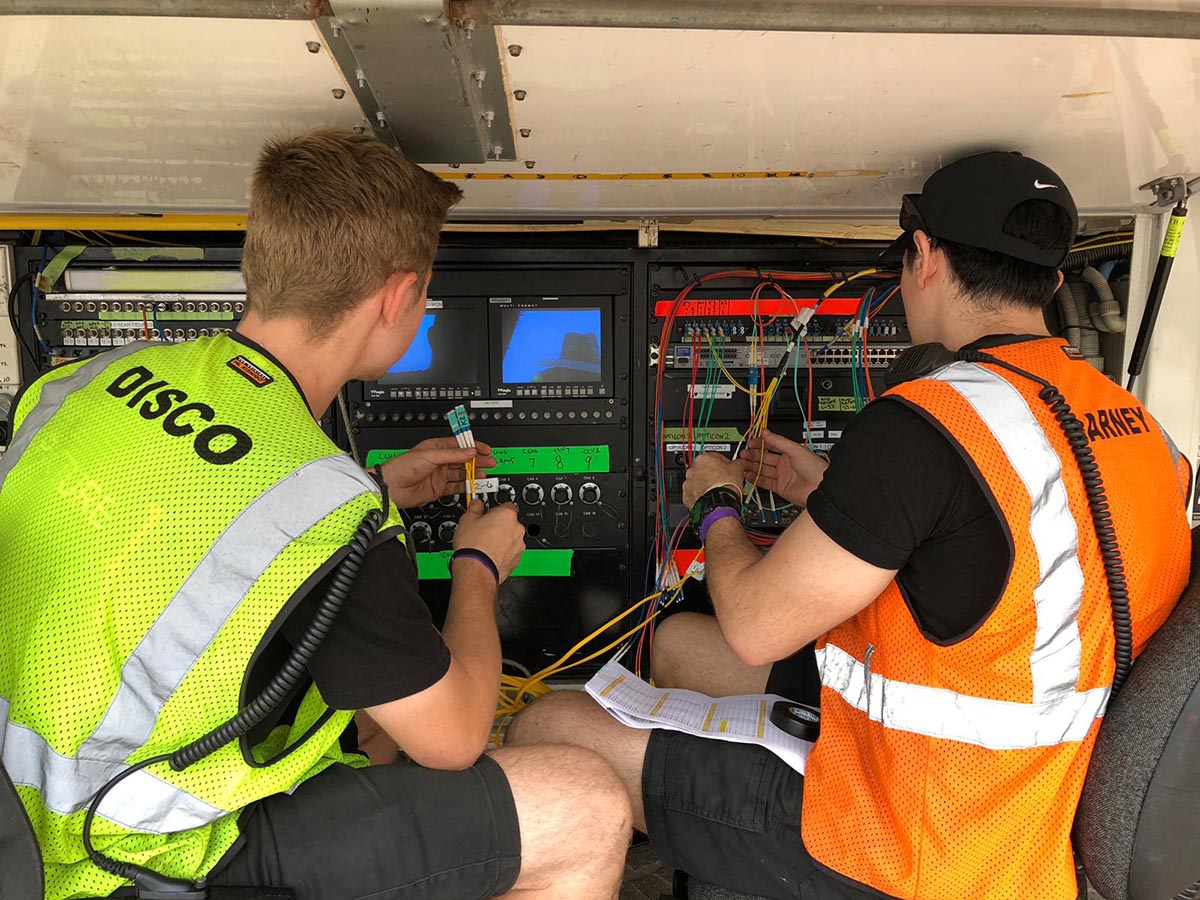
Remote CCUs were placed around the site with video trunked via the MicroN Network and comms routed via remote Artist Frames, IP Tally interfaces and Camera Control over the network resulted in no noticeable difference between cameras connected directly to the truck and remote over the MicroN network in picture quality or control for technical staff or the camera operators.
Twenty-two Ubiquiti Unifi Switches were used for all network data, lighting control and Dante audio transport with a mixture of 1GB and 10GB links between areas based on bandwidth.
The large Riedel Artist intercom system deployed for communication resulted in no limitations to how the crew could interact or talk to each other. The Riedel Artist Frames were a mixture of 128 and 64 port, and were linked via a redundant fiber ring to facilitate all event and broadcast communications.
Josh described the Riedel Bolero system as very handy, especially as the crew sometimes had to talk on up to six different communications channels at once. A total of 24 Riedel Bolero Beltpacks were used.
“It was impractical for some staff to wear five or six 2-way radios so the Bolero system implemented across the project was the ideal solution,” added Josh. “It was seamless and the audio quality and coverage was very good despite being in such an RF congested environment, in fact you really couldn’t fault it.”
There were also 51 analogue UHF, analogue VHF and a mixture of Zeon and Orion digital radio channels interfaced into a matrix system including three UHF Bases on the Sydney Harbour Bridge Pylon interfaced via IP.
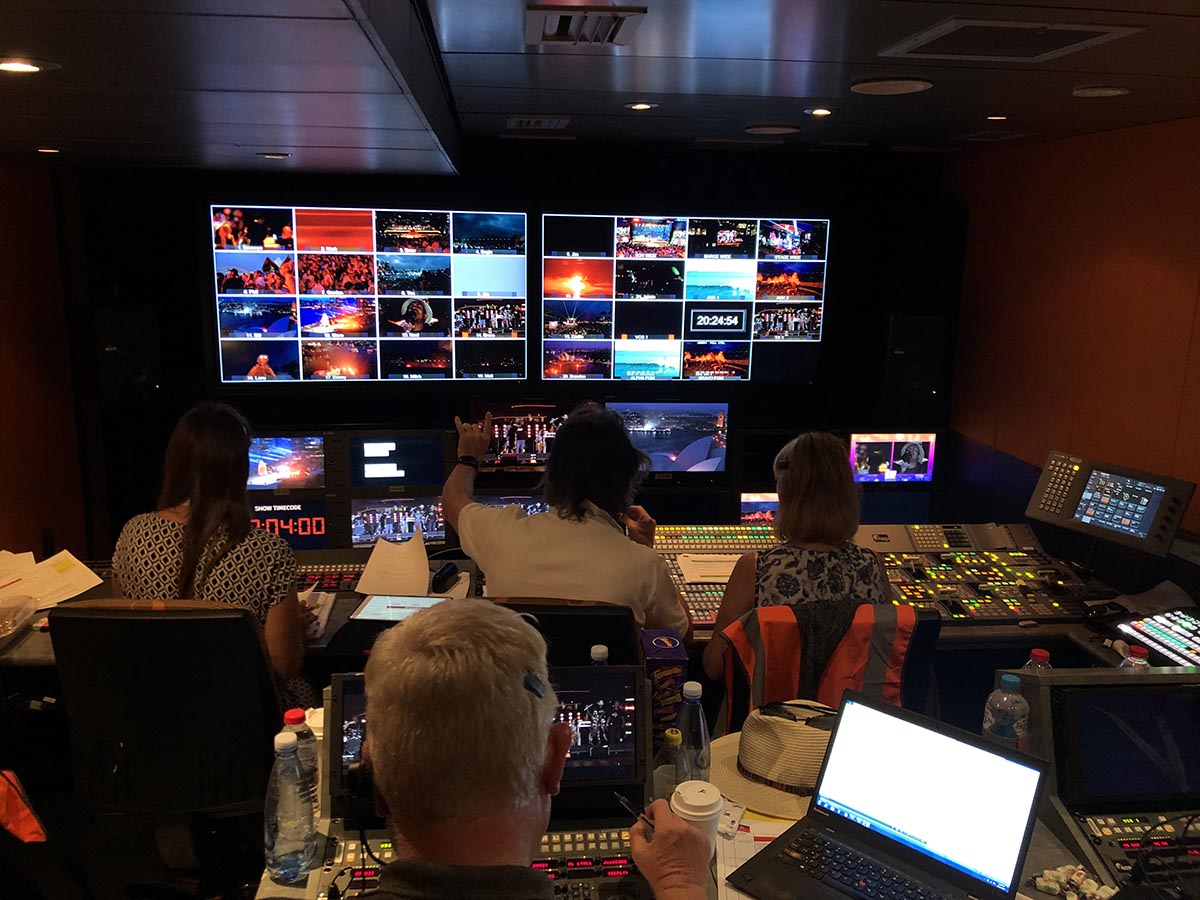
Over 7km of OpticalCon Quad Fiber and over 7.5km of 16 Core Fiber ran between Sydney Opera House and Campbells Cove, with the fiber network covering the Sydney Opera House Forecourt, Loading Dock, North Boardwalk and nodes all the way around to Hickson Road Reserve. There was also sunken fiber in Circular Quay to the Screen Barge. All of this cable was put in on one overnight run.
“To get the bandwidth we required, the only real option was to run our own fiber,” added Josh. “There were government-owned tie lines available but they don’t give you enough bandwidth for a project such as this. One of the key things with using MediorNet is that the video is uncompressed so you maintain quality and minimize any latency issues, using the government tie lines would have meant compressing the video and limiting the scope for changes as the project evolved.”
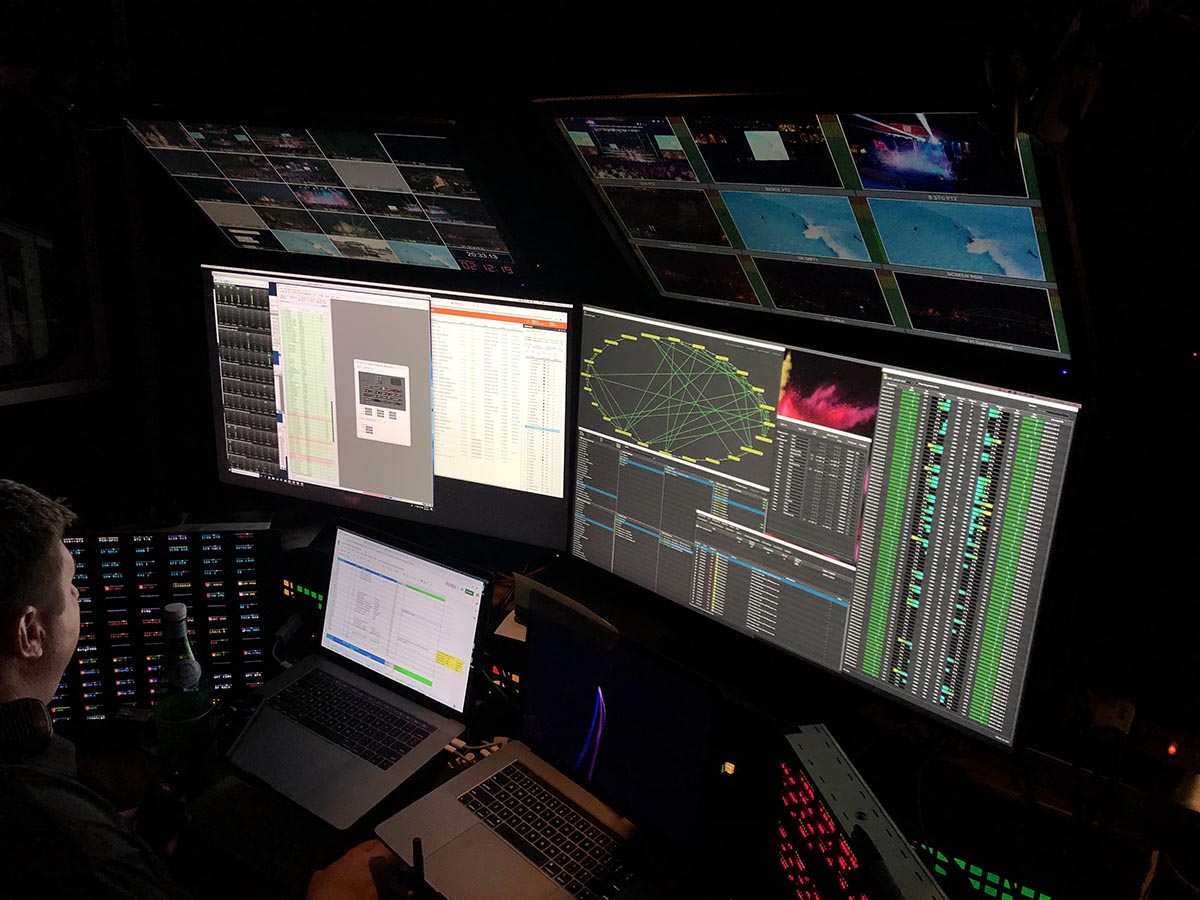
A total of twenty-three HD cameras were deployed across the Sydney Opera House Forecourt, Circular Quay, Campbell’s Cove, Quay West Apartments, Sydney Harbour Bridge Pylon and Garden Island. These included ten Panasonic HK-HC5000, seven Panasonic HK-UC4000 4K, two Panasonic AJ-PX5000G 3G P2 ENG camera and four Sony HSC-300 HD cameras located on HMAS Choules. Added to that were a wide range of Fujinon lenses.
“There were several comments made about how clean and crisp our new 4K Panasonic cameras with the 4K lenses from Fujinon performed” said Josh. “Everyone was delighted with their performance.”
The remote location cameras could have been a challenge to set up in such a congested RF environment and so Ubiquiti AirFiber, which runs at a different frequency range that is not as saturated allowed the use of a video over IP solution, was deployed to great success.
The screens were exclusively from ROE and included 188m² of ROE MC-7H LED in ACASS touring frames on a barge in the middle of circular quay, 33m² of ROE CB-5 in T4 Touring Frames for SOH IMAG Screens and one 15m² ROE MC-7H LED Screen in ACASS Frames on HMAS Choules.
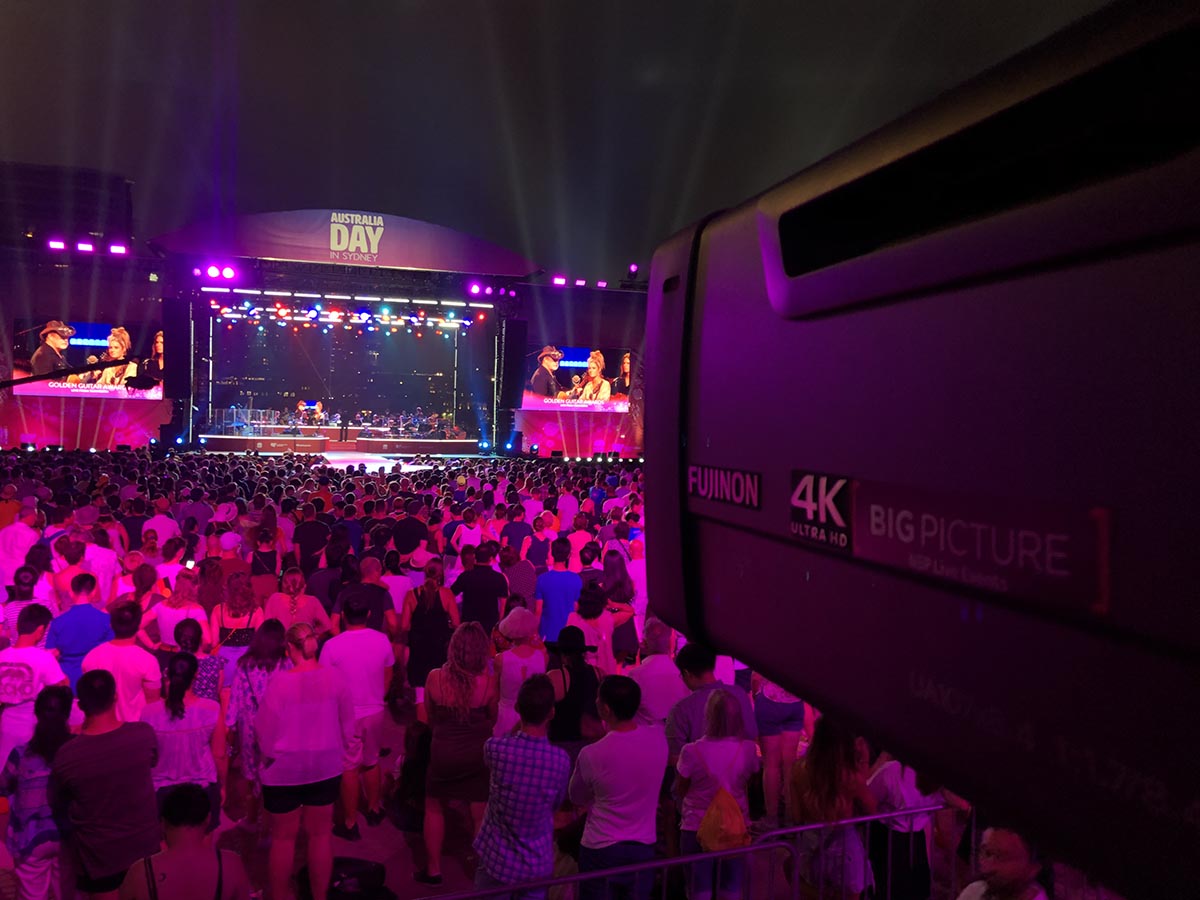
“Given the technical complexity and scale of the project, in addition to broadcasting live to a national audience, we needed to ensure the technical solution not only met the needs of the project but was a truly integrated solution,” continued Craig. “Big Picture were able to provide this to us in many ways. They maintain a substantial inventory of quality equipment and now being part of the NEP network were able upscale in line with the needs of the project.
“This being said, equipment supply is only one part of any project’s success. The Big Picture team, expertly led and managed by Josh Moffat were not only highly skilled in their respective fields but equally as focused on the overall success of the project and the technical solution as a whole.”
For more information about Big Picture, visit www.bigpicture.com.